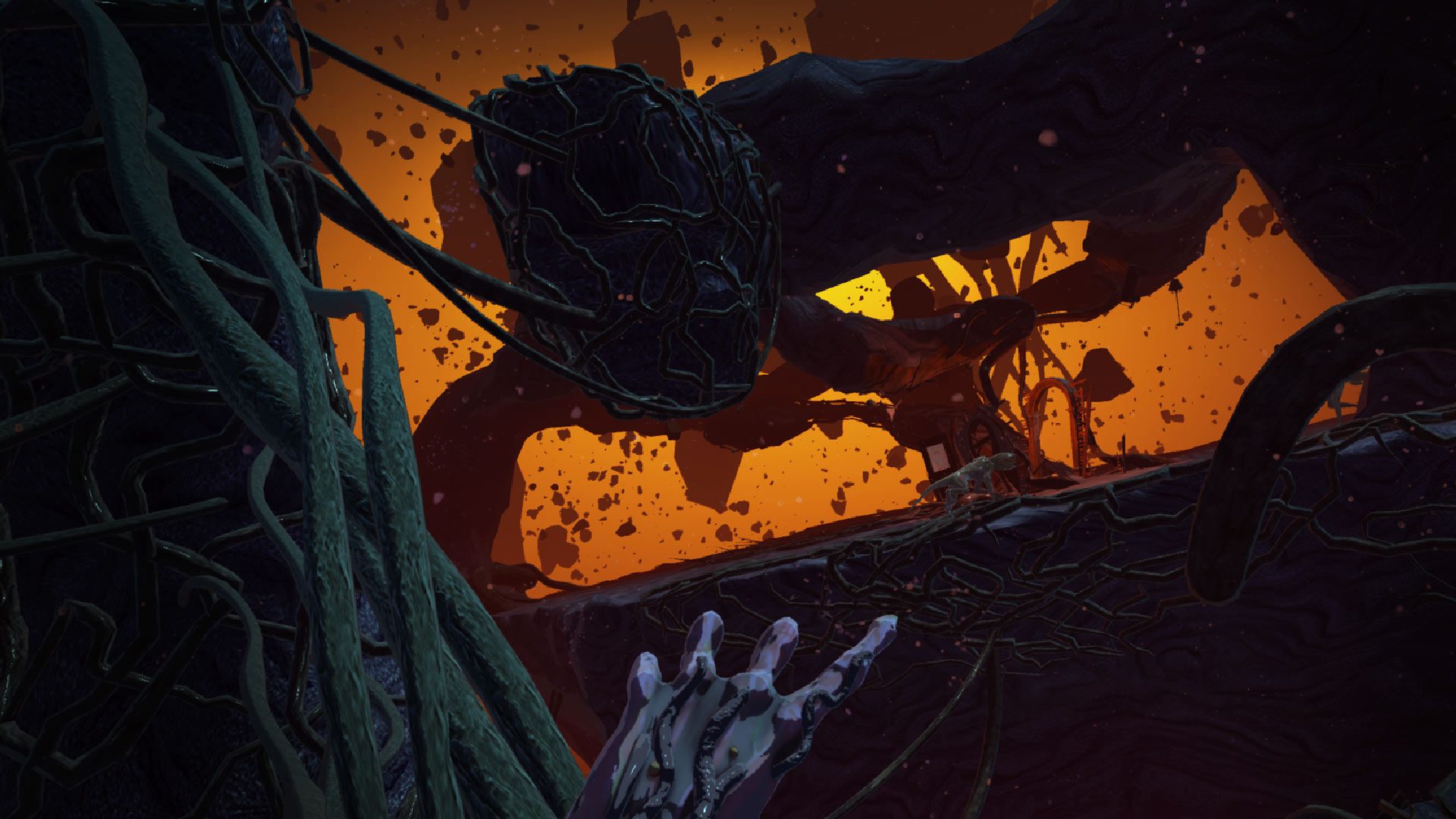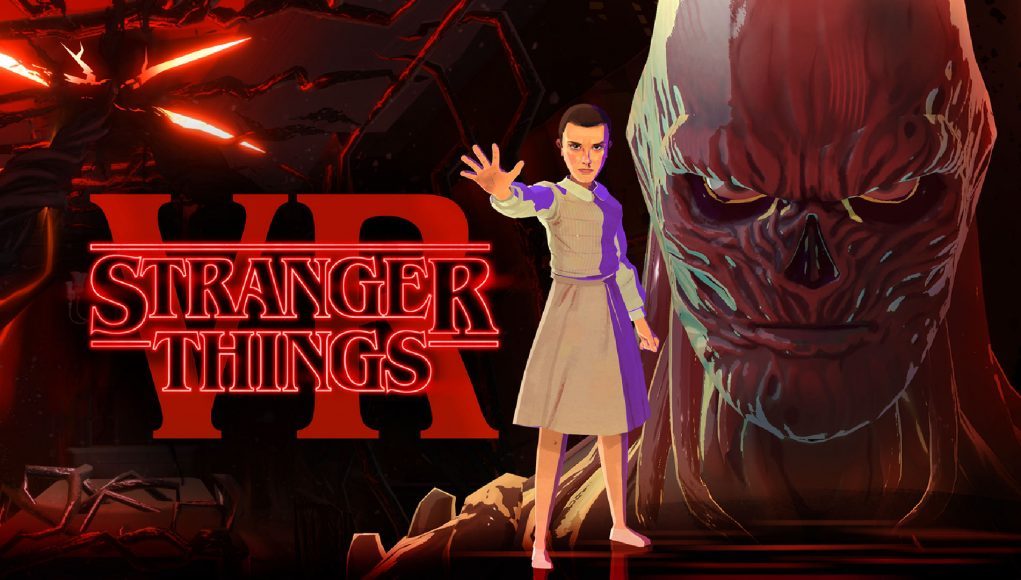Stranger Things VR is a visually intense retelling of the TV show’s last two seasons from VR pioneers Tender Claws, known for their weird and wild VR experiences Virtual Virtual Reality (2017) and The Under Presents (2019). While Stranger Things VR showcases the studio’s patently deft art direction, the game feels distinctly like an extended brand engagement experience that’s more concerned with prepping us for the show’s upcoming fifth season than treading any new or interesting ground.
Stranger Things VR Details:
Available On: Quest 2/3/Pro
Reviewed On: Quest 3
Release Date: February 22nd, 2024
Price: $30
Developer: Tender Claws
Gameplay
If you’re thinking of playing the VR game and you haven’t seen the complete four seasons of Stranger Things on Netflix yet, you’re going to be in for some serious spoilers from the moment you get past the loading screen.
And forget it if you haven’t seen the show at all, as you’ll have absolutely zero idea of who’s who and what’s going on, as the entire game is presented in a way that heavily relies on the user’s familiarity with major events and characters from the show. It is “Stranger Things VR” after all, so that’s to be expected to some extent, although it’s a shame the studio didn’t have the leeway to tell a more unique story within the franchise’s universe.
That basically leaves the VR game hamstrung to retread the main bits from the third and fourth season, albeit starting backwards from the biggest plot point reveal and moving into the main antagonist’s backstory.

At first, the game seems dedicated to fleshing out the show’s villain Vecna, as it traps you in the terrifying world of the Upside Down and tasks you with finding your way out, all the while taunted by ghostly memories of Dr. Brenner. There’s some light combat and interesting movement mechanics here, although mostly it’s about making your way through successive mazes that are linked together through gateways that you can open in the minds of Demodogs and giant flowers with Demogorgon heads. Yes, that aspect is trippy weird and I’m totally here for it.
Although it started off with what I thought was going to be a deeper exploration into Vecna (who doesn’t like a good antihero?), I soon found myself tackling levels that not only settled into heavy repetition, but were continuously punctuated with things I already know about the story. Beautiful and surreal, granted, but there’s no real payoff outside of that.
About halfway through the game’s nine chapters, it was revealed I wasn’t actually going to stick around as Vecna and build my powers and skills to some satisfying conclusion, but rather I would be randomly shuffled around characters in what felt more like a loosely strung together speedrun of the show’s most recent narrative, punctuated by more predictable featurettes and repetitious combat with the only two real enemies in the game, the Demodogs and Demobats—both of which are easily dispatched by telekinetically tossing crap at them.
This is a shame, since Vecna’s mechanics are pretty promising, as you can spawn vines on structures that act as a basis for him to grip on with a sort of Spider-Man-eqsue ease. I would have liked to see this used to greater effect, and incorporated into puzzles, boss battles, more challenging parkour—basically everything the game is missing. Instead, you’re ejected from Vecna, and only ever get to use a sliver of those abilities as Eleven, who is significantly less fun as a playable character.
That said, it took me around four hours to complete all nine chapters, and a little more to tool around with the bonus mixed reality games, which are fun but brief. The ending left me feeling about as bored as I was during the entire game, albeit with a credit roll and outro music as the only real indication it was all over.
Immersion
The game’s visuals are highly stylized, and at times can be absolutely jaw-dropping. Despite some distinctly lower quality textures and lesser poly counts than the gameplay trailer above would suggest, Stranger Things VR clearly takes the mantra “every frame a painting” to heart.
In contrast to the lackluster gameplay I mentioned above, which at times felt more like a tutorial to something greater that never came, the game’s art and jarring surrealism does a lot of the heavy lifting.

The game’s clear dedication to nightmarish surrealism and constant narrative switching comes at a cost to ’embodiment’, or feeling like you’re actually in virtual place and not just overly occupied doing some complex task. It’s the difference from being immersed in a movie or flatscreen video game and forgetting you’re sitting in a chair, and feeling like you’ve actually been transported to somewhere else. Being shuttled around from environment to environment and character to character so abruptly diminishes that ability to feel like you’re there and can trust the rules of the world, since you’re always left guessing where you’re going, who you are, what powers you have in what timeline, etc.
Still, the first half of the game does a great job of building up those mechanics that let you traverse chasms and stay out of the Demodogs’ reaches, although sadly enemy AI is pretty dumb, as enemies can oftentimes get hung up on game geometry and wig out stupidly.
Comfort
There are two or three momentarily uncomfortable scenes that force artificial movement, and there are also a fair number of flashing lights that could be of concern to photosensitive users—the latter of which shows up as an on-screen warning before you start every game.
That said, it’s a fairly comfortable game thanks to a good number of options available to the user and an overall smart world design that respects the player, even in the face of Vecna’s ability to swing and move around on vines.
‘Stranger Things VR′ Comfort Settings – February 22nd, 2024 |
|
Turning |
|
| Artificial turning | ✔ |
| Snap-turn | ✔ |
| Quick-turn | ✖ |
| Smooth-turn | ✔ |
Movement |
|
| Artificial movement | ✔ |
| Teleport-move | ✖ |
| Dash-move | ✔ (as Eleven) |
| Smooth-move | ✔ |
| Blinders | ✔ |
| Head-based | ✔ |
| Controller-based | ✖ |
| Swappable movement hand | ✖ |
Posture |
|
| Standing mode | ✔ |
| Seated mode | ✔ |
| Artificial crouch | ✖ |
| Real crouch | ✔ |
Accessibility |
|
| Subtitles | |
| Languages |
English, Japanese, German, French, Korean, Italian, Portuguese (BR), Spanish
|
| Dialogue audio | |
| Languages | English |
| Adjustable difficulty | ✔ |
| Two hands required | ✔ |
| Real crouch required | ✖ |
| Hearing required | ✖ |
| Adjustable player height | ✖ |







